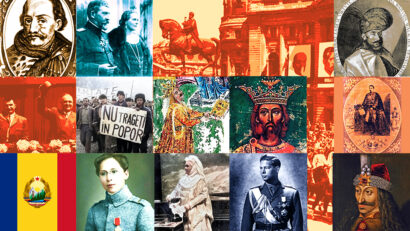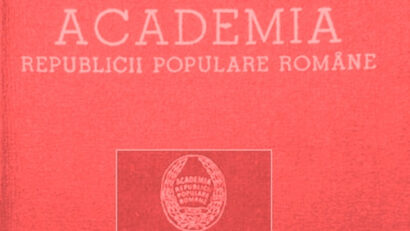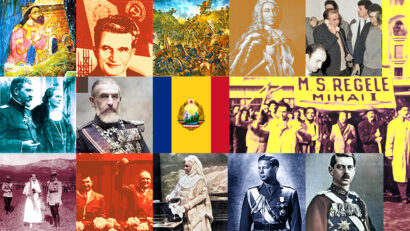Romania at the Inter-Allied Games
In the summer of 1919, at the new Pershing Stadium the Americans had built in Paris, approximately 1,500 athletes competed in 19 sporting events known as the Inter-Allied Game

Steliu Lambru, 17.11.2025, 11:57
On the initiative of the Americans, in the summer of 1919, at the new Pershing Stadium they had built in Paris, approximately 1,500 athletes competed in 19 sporting events known as the Inter-Allied Games. Romania was also invited to participate, and a Romanian battalion marched in the parade before the Games in July 1919. Romanian athletes competed in football, rugby, shooting, athletics, horse riding, tennis, swimming, wrestling and boxing, without achieving any notable results.
Historian Bogdan Popa from the “Nicolae Iorga” Institute of History recalls Romania’s story at the Inter-Allied Games:
“The French Parliament decided to commemorate the victory in World War I and invited all the allies to participate in the parade under the Arc de Triomphe. It was opened by the French commanders, Pétain, Douglas Haig was there too, General Pershing, commander of the American Expeditionary Force, was there too, and all the allies. The wounded and maimed of war opened the parade, and as a sign of the new times to come, tanks and air forces closed it late into the night.”
It was the first international professional outing for Romanian athletes who, until then, had been amateurs with financial means.
Bogdan Popa: “The first sports clubs, in the true sense of the word, appeared in Bucharest at the beginning of the 20th century. There were automobile clubs, tennis clubs, soccer clubs, and they were socially and economically elitist. Owning a car said something about the person who was a member of such a club; they were someone wealthy. They were descendants of the elite, nobles by birth, wealthy bourgeois. They were rich enough to buy a car or a plane and use them to practice a sport. Football clubs were initially a German and British business. It was a time when the Romanian economy was open to foreign investment.”
The beginnings of mass sports were linked to the army and wars, and Romania was no exception to the rule. In 1913, during the Second Balkan War, the Romanian army was mainly made up of peasants with no physical training. In World War I, the physical training and endurance of the military was truly tested, especially after the Central Powers occupied southern Romania in 1916. Bogdan Popa focused on the changes related to sports that took place within the Romanian army during those years:
“In the summers of 1917 and 1918, the army replaced its old commanders and began training its soldiers with an emphasis on physical fitness. The soldiers were better trained. They were not only taught to shoot and love their country, but also to shoot and defend themselves in hand-to-hand combat. The cavalry was trained not to charge, but to ride to the battlefield, where the fighting would take place on foot. Horses were no longer used in the offensive charges of the light brigades, and these practices were abandoned.”
Although fighting ceased in 1918 after the Central Powers surrendered, regional conflicts continued. Romania faced internal instability and the threat of anarchy, as well as external attacks by the Bolsheviks. In 1919, it fought on three fronts against the communists in the east, north, and west.
Bogdan Popa: “In this veritable gathering of demons within and around the country, the American Expeditionary Force, sometime in January 1919, sent an invitation to the Romanian army announcing that it was organizing the Inter-Allied Games in Paris. What were the Inter-Allied Games and why were they organized? Should Romania have gone to these Games? Of course, it was an opportunity for the US to demonstrate its political, military, and economic power.”
Bogdan Popa provided details about the athletes in the Romanian delegation and their performances:
„Romania formed a military sports detachment, sending 118 Romanian athletes to Paris. Of these 118 men, 53 were active before 1916. We are talking about high school students and people in their thirties, many of whom had studied in France, where they had learned to play rugby. They also learned to play tennis there, and a few learned to play soccer. They would form the core of the sports movement in interwar Romania. At the Games, Romania lost in almost all events. Major Filip Iacob, a cavalryman, was the only one capable of performing well. The tennis team was interesting, but did not perform well.”
Romania’s participation in the Inter-Allied Games was also part of its ambition to show its Western friends that it was a reliable ally.
Bogdan Popa: “Despite the lack of sporting tradition, there is clearly a political message behind the Games. Romania had sent an army that had been trained by French officers, it had received help from the Allies, and it wanted to show that the investment in it had been worthwhile. About those sent there, I found only one report from an officer in the shooting team who wrote that they had been there and it had been extraordinary. The officers had been housed separately from the soldiers, they had not mixed much, and ranks had been respected. After they finished the shooting competition, they were taken to see Paris, the museums, the Eiffel Tower, and other sights. I think it’s the only time in Romania’s history when the army was totally independent of any political decisions.
Romania was an honorable presence at the 1919 Inter-Allied Games. As is often said about sports, it is important to participate, not necessarily to win. (MI)





























